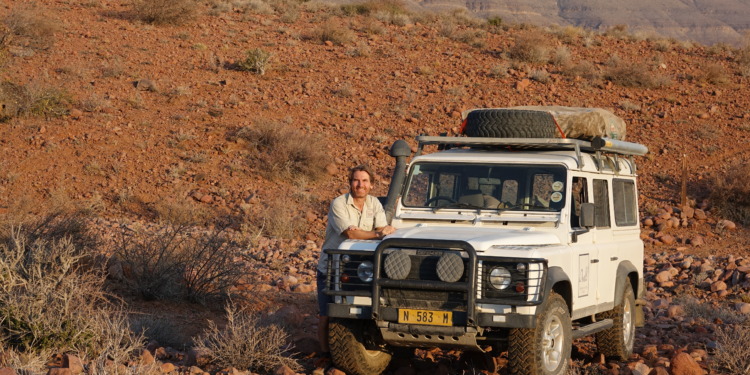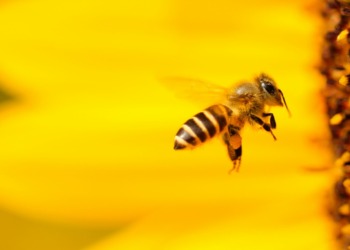If we are not concerned with sustainable development, and more importantly, if we do not implement it, life on this planet will end abruptly.
Pharmacist and species and animal protection activist Hermann Rohlfs understands the global struggle for sustainability as a lifetime task but doesn’t seek the limelight.
Rohlfs, who is also a pharmaceutical entrepreneur and philanthropist, primarily works to protect endangered species and wildlife in Namibia, where he created one of the largest privately-owned conservation areas in the world and where he now operates modern lodges in a sustainable manner.
I talked to Hermann Rohlfs about his work and the difficulty of his task. Here is what he told me.
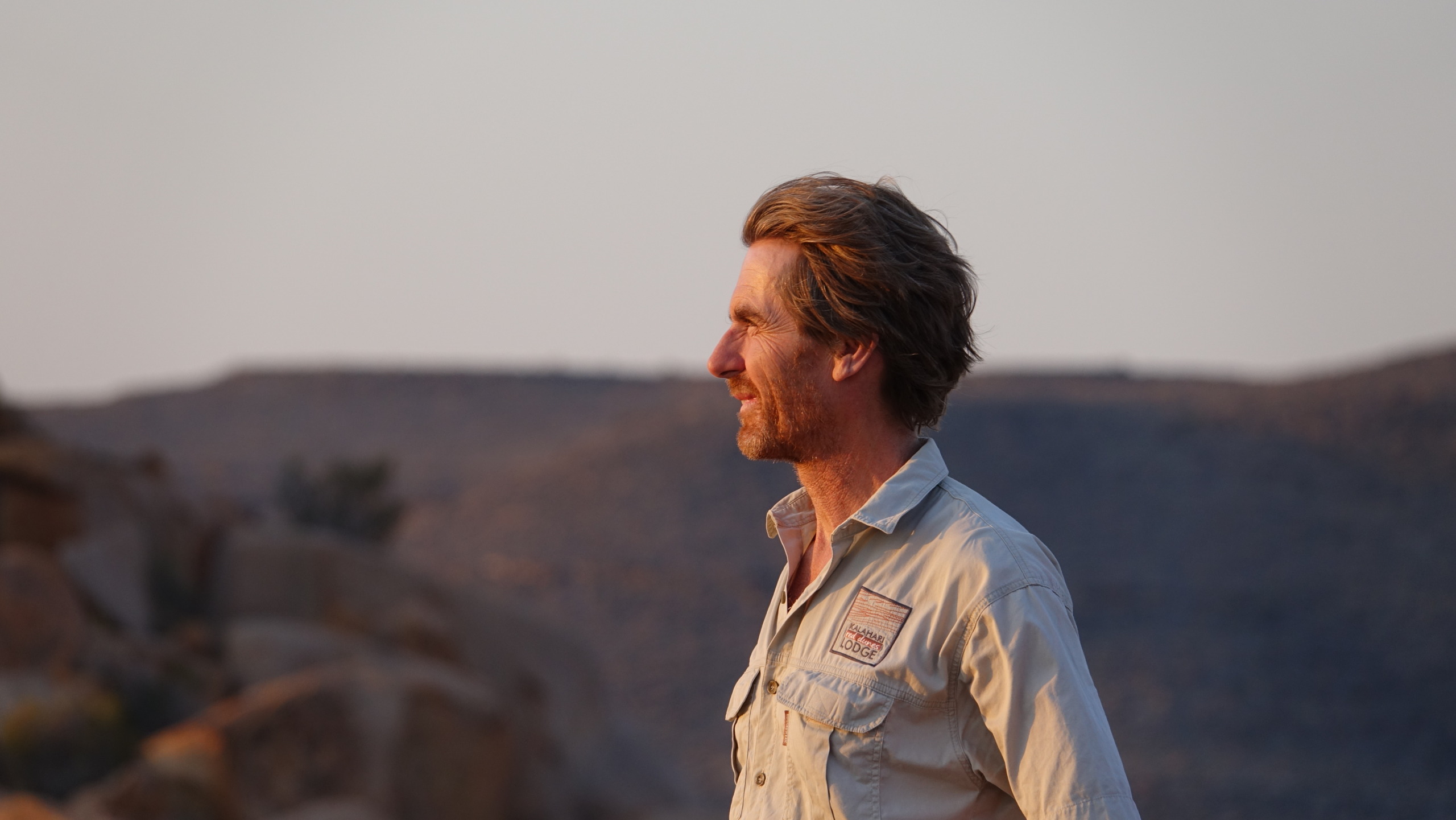
You have achieved a great deal in species and animal protection, including with your own foundation for the protection of endangered black and white rhinos in Namibia. What does it take to implement such important projects?
Hermann Rohlfs: When you are sitting in the plane, there is a notice that in case of loss of cabin pressure, oxygen masks will drop down, and you should put on your own oxygen mask before helping others. This sequence reflects my basic view of life. I must first put myself in a position to act. If I can’t do anything, I can’t make a difference. Everyone learns his trade. I learned to become a pharmacist.
“Our planet and the nature that surrounds us are the highest good available to us.”
If one has the means to make a difference, one decides on a global issue that a foundation’s endowment can support and uses one’s creative powers and previously acquired capital for it, in the best case from one’s own activity and not inherited. The idea is to use the money provided to lay the foundation for more and more ideas, so that a project can support itself like a perpetual motion machine — i.e., a self-propelling, self-financing and, in the best case, a project with steady growth, serving its goals and purpose without restrictions and without financial losses. Our planet and the nature that surrounds us are the highest good available to us.
The need for sustainability is literally the most burning issue on the planet.
Hermann Rohlfs: That is exactly why this topic affects everything that I do. Early on I chose to focus on Namibia in Southern Africa because I could achieve a significant multiplier effect. My thinking at the time was: I can protect as much land as possible and develop and implement a project that involves the people there. This project must be self-sufficient without outside capital, so that in the best case, the land is able to produce more and feed more people than before.
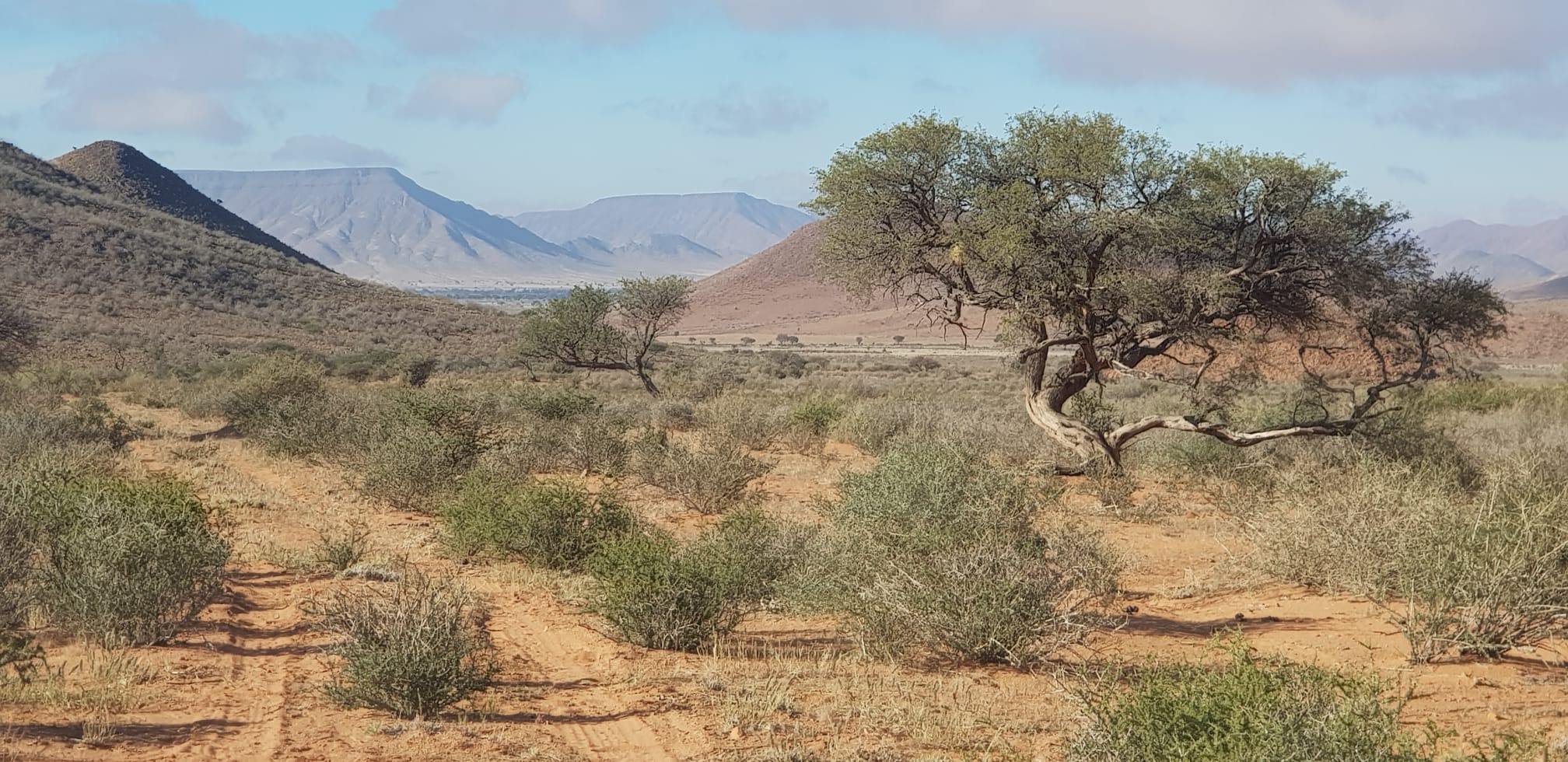
How essential is it to consider from the beginning the project plan as a whole: the land, the people, the animals, the community…?
Hermann Rohlfs: It’s the whole, the project in its entirety, that counts. If you just pick out one aspect, it doesn’t work anymore.
Becoming a pharmacist
To get back to the beginning before we go any further: When did you decide to become a pharmacist? Was there a particular reason for that choice?
Hermann Rohlfs: I was born on April 4, 1963, a Sunday, at 7:00 p.m., thinking I had to earn money somehow, even though it wasn’t clear to me at the time how [laughs]. As a child, I actually did think about how to earn money. At the time, medicine and dentistry were good ways to make money. The cutoff grade average for admission to medical school (numerus clausus) was maybe 1.3, but my A-levels were 1.5. Since I wasn’t certain about getting into medical school, I chose something similar: pharmacy.
I wanted to be a scientist and thought you could take a few semesters of pharmacy courses and then switch to medicine or research. In the third semester, somebody told me that with a pharmacy degree I could only become a pharmacist and nothing else [laughs]. At first, I was shocked that I was on the wrong track, but I didn’t want to do anything else, so I finished my studies and became a pharmacist.
How did you acquire your first pharmacy?
Hermann Rohlfs: I didn’t want to be someone else’s employee, even for a single day, but wanted to operate my own pharmacy business from the start. I graduated at the age of 24 and acquired my first pharmacy, the Rats-Apotheke (Council Pharmacy) in Uslar. The previous pharmacist had died, and a successor was needed. A wholesaler whom I had previously contacted and had asked to keep his ears open called me about the opening. I had done my internship at Hof-Apotheke Detmold and wanted a nice, old pharmacy. Directly after finishing my studies, I got the call. I drove to Uslar and stayed there.
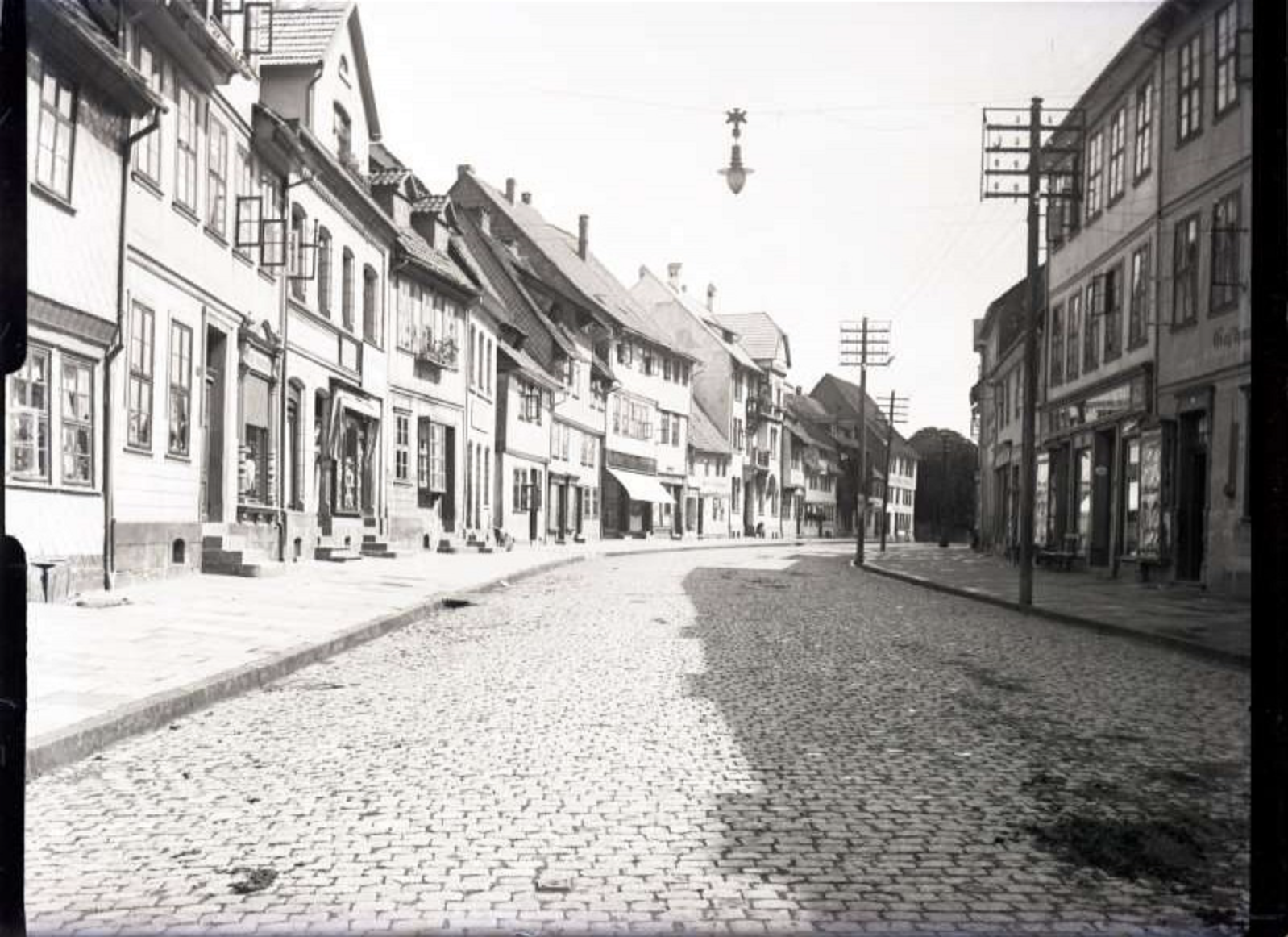
At 24, I had the “youngest pharmacy” in Germany. As luck would have it, all the employees were younger than me except one, and my apprentice was 16. That was nice. It was a larger-than-average pharmacy with an exciting history. There was a small factory behind the pharmacy that had been closed for a long time. Before the world wars, the Rats-Apotheke had produced its own products, shipping them all over the world. In the 1990s, as outpatient oncology developed and cancer treatment was no longer limited to in-patient hospital care, cytostatic drugs production started. With a wider range of drugs, cancer treatment became more and more specialized.
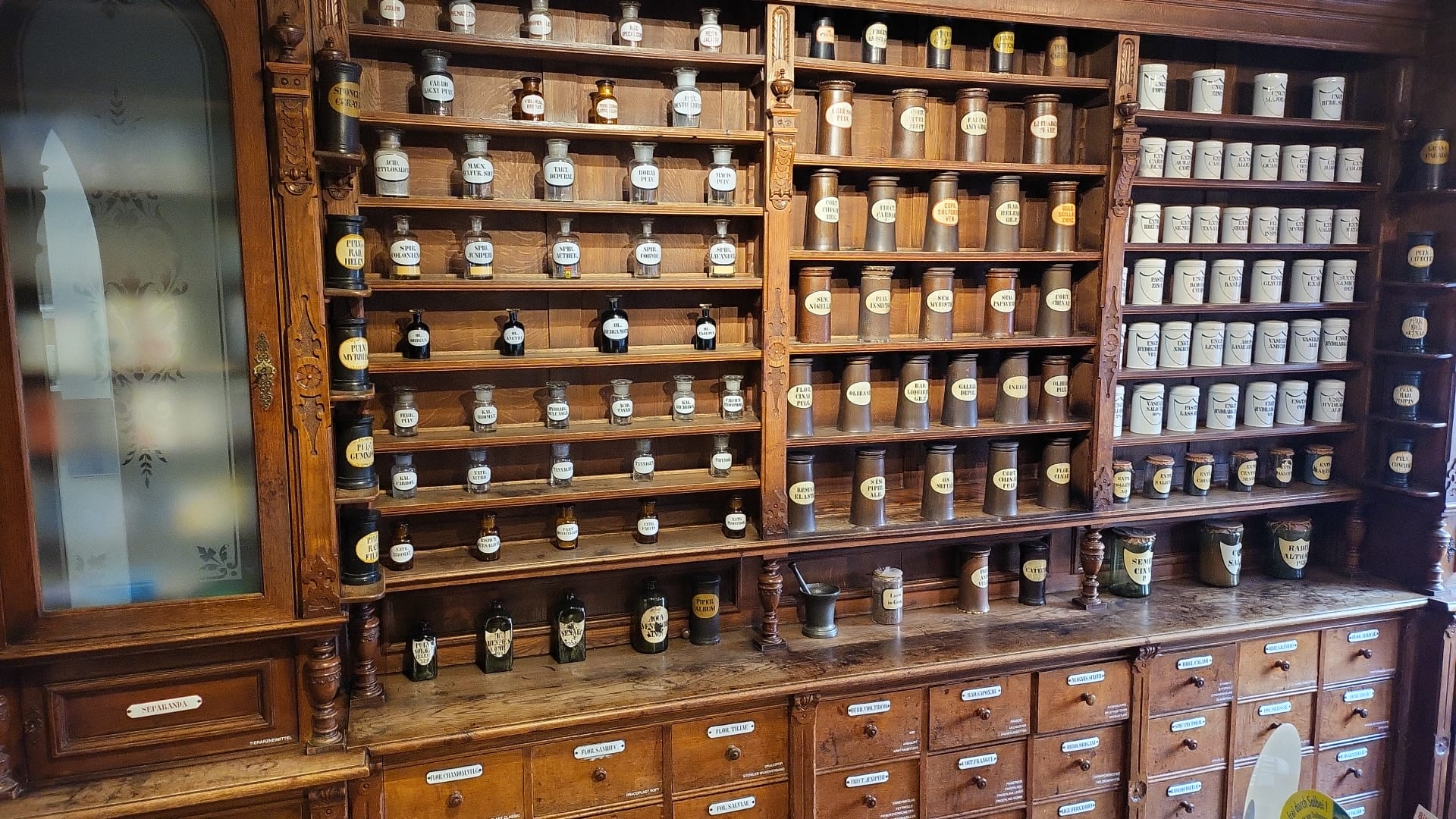
When I was a student, there were maybe three or four cancer drugs; today there are hundreds. These drugs had to be manufactured. I was approached by doctors who wanted to set up shop in our area and asked about who could produce the medications for them. I said, “that would be me.” They said, “the guy who’s always so lively.”
Pioneer in pharmacy and the pressure of the pharmaceutical industry
As a pharmacist, do you keep up with the science or do you focus on the practical management of the pharmacy?
“That required a laboratory. Since nothing like that existed at the time, I created my first preparation lab. I had to figure it out for myself.”
Hermann Rohlfs: As a pharmacist, there is rarely the desire to go deeper into the science. That’s why the doctors approached me. It was less about the science than about innovation. I was ready to work on challenging technologically innovative projects. That required a laboratory. Since nothing like that existed at the time, I created my first preparation lab. I had to figure it out for myself because at the time there were no guidelines. I had a Berner Box, a big box with two ports on each side, like you see in old movies, where it was sterile and protected you from the aerosols you produced.
There were important questions to answer. Where do you get chemically impermeable gloves and suitable gowns? I produced from the left to the right through the machine, so you don’t get it wrong, and developed various rules for myself that are standard practice today. I had my first lab, then my second and third, and it just kept getting better. When it became known that I had a lab and was doing it well, that the logistics were right and deliveries were on time, I had more and more oncologists coming to me.
Was there a pivotal point in your career?
Hermann Rohlfs: The day community health centers (CHCs) were established by law. We, pharmacists, were allowed to establish them. I was the first pharmacist to establish a community health center in Thuringia that focused on oncology. That was a decisive step for me.
As community health center operators, we have ensured that locations continue to be maintained. Many doctors don’t want their own practice because of the bureaucracy. There is also the legal risk of recourse for patient prescriptions which can lead to economic ruin. By contrast, if investors bear this risk, doctors can focus on their primary activities.
At some point, pharmacists were no longer allowed to establish community health centers. The purpose of the law was to remove those from the right to establish CHCs who were not physicians, and a pharmacist is not a doctor. They also wanted to keep big business out. The link between big business and pharmacists didn’t make sense to me. Hospitals attract big-cap service providers like Helios or Fresenius, which have considerably more capital than a pharmacist, who is usually a small business owner.
We can still establish health centers, but now the legislators want to find other ways to stop that. We’ll probably have to become a hospital. By now, we have become big enough that things are starting to balance out. We’ve become a bit of a heavyweight in the field.
The field you’re in is very high-pressure. You were sued by Novartis and Bayer. Your existence was at stake. How did that come about?
Hermann Rohlfs: When we started separating out eye syringes, we made individual patient containers for cytostatic drugs from the large containers produced by the industry. If we get 1000 mg of an active ingredient, but the doctor only prescribes 875 mg, we must, to put it in layman’s terms, portion it out. We have prepared eye injections for age-related macular degeneration on an individual patient basis, which was cheaper for the health insurance companies, who had previously had to pay for the original container; consequently, we reduced the cost of treatment significantly.
Who was upset about this? The pharmaceutical industry, which claimed what we were doing cut their margins by half. Novartis and Bayer sued us for damages, around 80 million euros, which would have bankrupted us. They offered to drop their lawsuit if I agreed to stop production. After one or two sleepless nights in which I got up drenched in sweat, I decided to stand up to Novartis, Bayer and the 50 or so lawyers on their letterhead who subsequently came down on me like a ton of bricks. We were intimidated and threatened. That was tough.
They wanted to make an example of me, because all the other pharmacies had backed down. There was initially a judgment against another pharmacist whom Novartis had sued for operating a manufacturing company. We joined forces with that company and went all the way to the European Court of Justice, even though we were not an official party to the complaint. At the European Court of Justice, we got a legal recommendation in our favor.
The Regional Court of Hamburg also pronounced judgments against us but did not directly prohibit us from production. At the time, we were growing bigger and bigger because we were the only pharmacy that was allowed to produce. If I had lost in court, we would have forfeited everything. In doing so, we made pharmaceutical history and created a new field for pharmacists that continues to save money for the healthcare system. At the same time, we have improved the quality of eye syringes, which are no longer prepared under non-germ-free conditions in doctors’ offices but in our sterile production facilities. We have done something good for the pharmacy profession. But I didn’t get a thank-you letter [laughs].
Everything for sustainability
Sustainability is of central importance to you. At the beginning of our conversation, for example, you mentioned your foundation’s project for the protection of endangered black and white rhinos in Namibia. Why did you start in Namibia and how did you do it?
Hermann Rohlfs: Namibia was no abstraction for me. I had been there often and had fallen in love with the country. My fundamental idea started with the devil’s claw, which grows invariably in the Kalahari and is a medicinal plant. Devil’s claw was over-harvested and so an endangered plant species. While I was building a lodge in the Kalahari, I was thinking of a conservation project for the devil’s claw: I thought to myself, what if instead of harvesting it in the wild, it could be domesticated and grown on a plantation between the dunes?
I tracked down a retired professor from Münster who was living in South Africa and who had found a means of getting devil’s claw seeds to germinate. The problem with the devil’s claw is that the seeds are fickle and are hard to get to germinate.
You can put them in the ground, you can dance to them, you can sing to them, it doesn’t matter. It is not yet clear why they are so difficult to cultivate. But this professor had developed a chemical cocktail to treat the seeds so they would germinate. We set up a large plantation with irrigation structures and special seedbeds to reduce the pressure to harvest wild plants. We made a huge splash over the years, but to make a long story short: It didn’t work.
Why didn’t it work?
Hermann Rohlfs: The babies, as the professor called the tubers, had sprouted, but it hadn’t rained in Namibia for nine years, or at least not enough to amount to anything. From seed to baby, the devil’s claw developed in a year. Having them grow into large plants, on the other hand, takes many years. In the beginning, I watered them, but at some point, we needed it to rain. It is not ecologically sustainable to irrigate a plantation in the desert. But the devil’s claw only grows in the desert, so we had to discontinue the project after ten years.
“It’s not the devil’s claw’s fault. It is designed that way and has survived for millions of years, until human beings came along.”
Devil’s claw is a diva, or in other words, it needs time. It just lies in the ground for ten years. It’s not the devil’s claw’s fault. It’s designed that way and it survived for millions of years, until human beings came along.
My idea was to develop the entire value chain. Now, the tubers are dug up, dried, and shipped all over the world, where the rest of the value chain is realized. It’s late colonialism: mineral resources are taken out and no further refining is done in the country. Endangered species suffer and no value creation takes place. I wanted to leave the extraction process in Namibia, rather than in Germany, at least the production of the thick extract. The transport volume of the thick extract to produce medicines would be much lower than exporting the dried tubers to Germany and it would contribute to employment for the people in Namibia.
What happened after the devil’s claw?
Hermann Rohlfs: It wasn’t the particular species but nature as a whole that had to be protected. Large areas of agricultural land were to be rewilded, such as the dysfunctional sheep farms in the south of Namibia with an average area of about 10,000 hectares, which only employed one or two people. We now have habitats with eagles, vultures, hyenas, and lions that belong there.
My first sheep farm hired two employees. After we built a lodge there, as a result, about 20 people had permanent employment, an increase of a factor of ten. During the devil’s claw project, we employed several people. In the end, not only did we have 10 or 20 times the number of people under employment, but we also had people of varying qualifications, from the lodge manager with a degree to the day laborers. Before that, all those hired had been cheap laborers who earned one euro a day.
Related Articles: What History Can Teach Us About the Conservation of Endangered Species | Protected Areas: the Past, Present, and Future of Conservation | When Humans Are the Cause, Humans Must Be the Solution | Accounting for a Life | Engaging the ‘Unusual Suspects’: An Interview With Azzedine Downes
As a result of our sustainably operated tourism, the soil regenerated. We were able to graze the land with domesticated animals. Some of them came back on their own. The bigger the area got, the more natural it seemed, and the value added was much greater to Namibia than its original agricultural use. We now have well over 1,000 square kilometers of land and have become the missing link between two large conservation areas.
Over the last ten years, I have bought up farm after farm, reforested the area and removed roads. This has greatly improved the migration of the animals, allowing them to move to areas with rain, for example. If there is farmland that hinders their migration, they get stuck in the fences or shot.
You have not only created jobs in Namibia, but if I am not mistaken, you are working to improve medical care.
Hermann Rohlfs: I was thinking of starting a clinic and infirmaries in the desert for our staff and for employees of other lodges, but that’s where Covid interrupted our plans. Now we are slowly moving to a scale where you can think of things like this. It’s an idea that we considered but it wasn’t implemented because of Covid.
You operate your Ondili Lodges based on sustainable tourism. What do you have to keep in mind?
Hermann Rohlfs: Tourism is not sustainable, but it creates sustainability. We have fenced off our land to hunting and commercial farms and left it open to the animals bordering on nature parks. Our fences are not half fences, as is often the case in Namibia, but high enough so that the animals do not die. We have permanently dealt with deconstruction, demolished houses, dismantling roads and dug out and cleaned up rubbish to return things to nature. We sometimes are criticized for building a swimming pool for the lodge in the desert. But if you don’t have a pool, you won’t have any tourists. That’s at least better than how the land was used when it was a cattle or sheep farm, where groundwater is pumped out of the earth from dawn to dusk into huge containers until they overflowed and with the lights on all night.
To build a lodge, we shut down ten farms at a time. We are reducing water consumption, despite what you might think. We generate our own electricity and heat the water with solar energy. Water for showers is collected and used twice. This is part and parcel of how we do things. Profits from tourism are reinvested in nature without exception.
Through tourism, we can make nature self-sufficient. So far, it has always been a case of investing, but always with the aim of the area becoming self-sufficient.
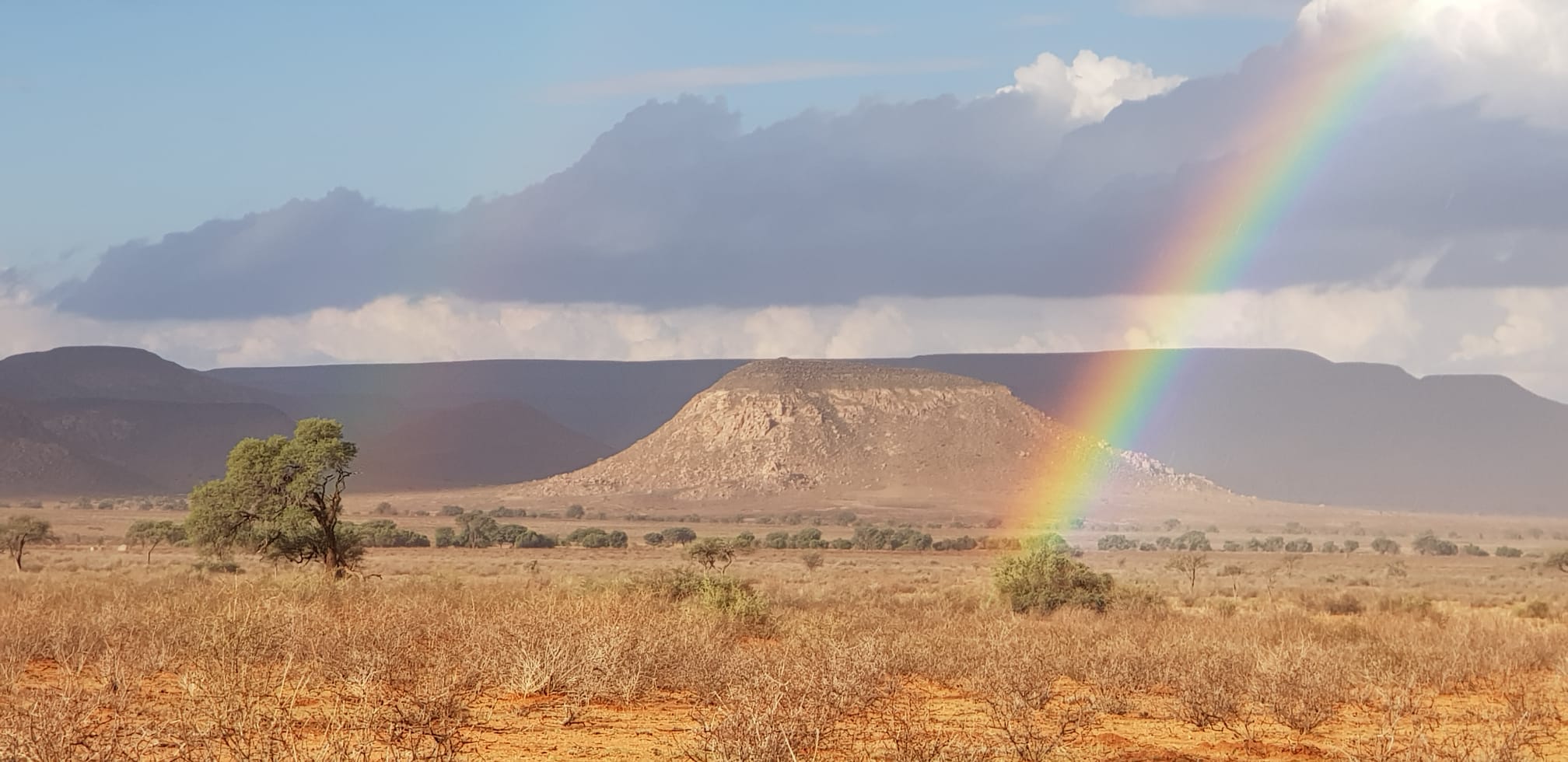
Nature and animals are our most valuable assets
The people of Namibia certainly notice your efforts to protect the land, the countryside, and the animals.
Hermann Rohlfs: The inhabitants understand the principle. They say, “This is good that you’re here. You’re creating jobs.” We say, “If we protect the rhinos, there will be jobs here, then the guests will come.”
“We serve the rhino, not the other way around.”
We serve the rhino, not the other way around. The same goes for desert elephants. They must be recognized as our greatest asset and need to be preserved. We have worked with the government to create certain reserves for the black and white rhino, both endangered species. There is no ownership of the rhinos. You get them on loan if you meet certain criteria with your nature reserve to be included in the Custodianship Project, which covers Southern Africa.
The objective is that the rhinos are dispersed as widely as possible, not only in national parks but also on private farms. Each entity has its own security concept. For example, armed units walk behind the rhinos. They are their constant companions because the rhinos are poached for their horns, which are made of keratin – fingernails – and this is said to have all sorts of uses. Especially because of the shape of the horn, it’s used as an aphrodisiac in Asia. One dead rhino brings in about $100,000. I’m afraid it’s a losing battle.
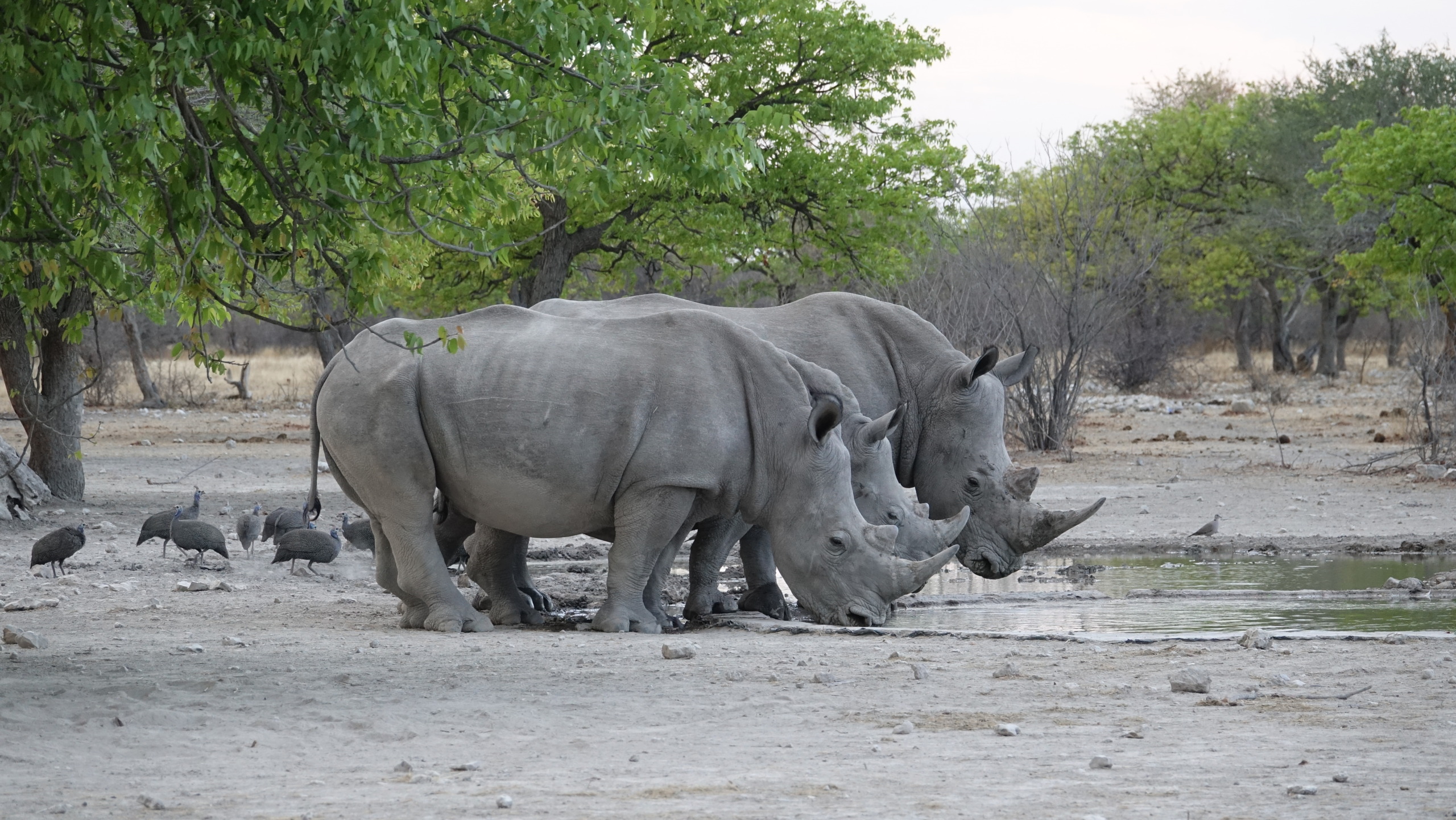
But you’re still fighting.
Hermann Rohlfs: I’m still fighting, but I think we are just delaying the inevitable unless we come up with a better plan. You don’t stand a chance against poachers who fly in with helicopters, shoot the animals while in flight, and cut off its horn with a chainsaw. Residents are careful to protect rhinos from native residents on foot. But you don’t stand a chance against poachers with machine guns, even the armed units don’t have a chance. Clearly, significantly more rhinos are killed than can be replenished.
What are your plans?
Hermann Rohlfs: I plan to further develop the existing protected areas in Namibia. I have used the money I earned in Germany for the creation of these areas. I want to do the same in Borneo. The starting point for the accelerated deforestation of the primeval forests in the Amazon and especially in Borneo was the introduction of biofuels in Germany. The basic idea of adding plant-based bioethanol to petrol to save fossil fuels was a good one. But we do not produce enough bioethanol in Germany which is why bioethanol is imported.
When you think of Borneo, you think of the wildest jungles with huge trees and orangutans. This land has been deforested 70% in the last ten years and palm oil plantations have sprung up. The palm fruits are picked and transported halfway around the globe so that they can be refined and processed into bioethanol in Germany.
In Borneo, the primeval forest is being destroyed to advance a German idea of ecology. Endangered species are threatened even more. The orangutans sit on a small island that has a remnant of a primeval forest. If they get into the palm oil plantations, they will be killed. The small jungle elephants are also targets. They are baited with melons laced with rat poison. The elephants eat this, maybe even come to the plantations just for the melons and they bleed to death internally and die two days later. Elephants are very intelligent animals, but they can’t match these traps. The banteng cattle and proboscis monkeys are also in danger of extinction. If these animals die in Borneo, the whole species there will be extinct.
“It takes longer than our lifetime, but we have to start doing it now.”
If you use your money to buy palm oil plantations, you can connect two separate islands through a corridor of former palm oil plantations. These areas would then be fenced off, protected, and reforested back to virgin forest. Fortunately, there was a law that plantations could not be built right up to the river, so you already have a strip about a hundred meters wide. If you want to buy a wider swath of land than that – and that’s a project I’m working on – it’s going to cost quite a few million, but you can make a big impact with a small purchase, so that the animals have much larger areas available again. It takes longer than our lifetime, but we have to start doing it now.
Editor’s Note: The opinions expressed here by the authors are their own, not those of Impakter.com — In the Featured Photo: Hermann Rohlfs in Namibia. Featured Photo Credit: Hermann Rohlfs.


